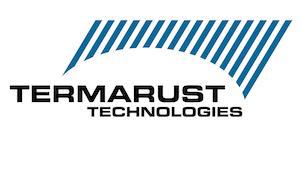HRCSA Single coat application
Before applying HRCSA coating, surface preparation Ensure the surface preparation complies to the following Checklist
1) Flat Surfaces: No loose rust and paint, dirt, oil, or black rust remaining on the surface areas
2) Salt contamination has been mitigated to: NVC3, NVN10, NVS10 (L to M) on all falt surfaces
3) Beam connections, rivet heads, nuts, bolts pins, bearings, etc. have been thoroughly flushed out with high pressure washer and salt remover additive.
4) Surfaces and Connections have been thoroughly air dried using clean, dry, 100 psi pressure air.
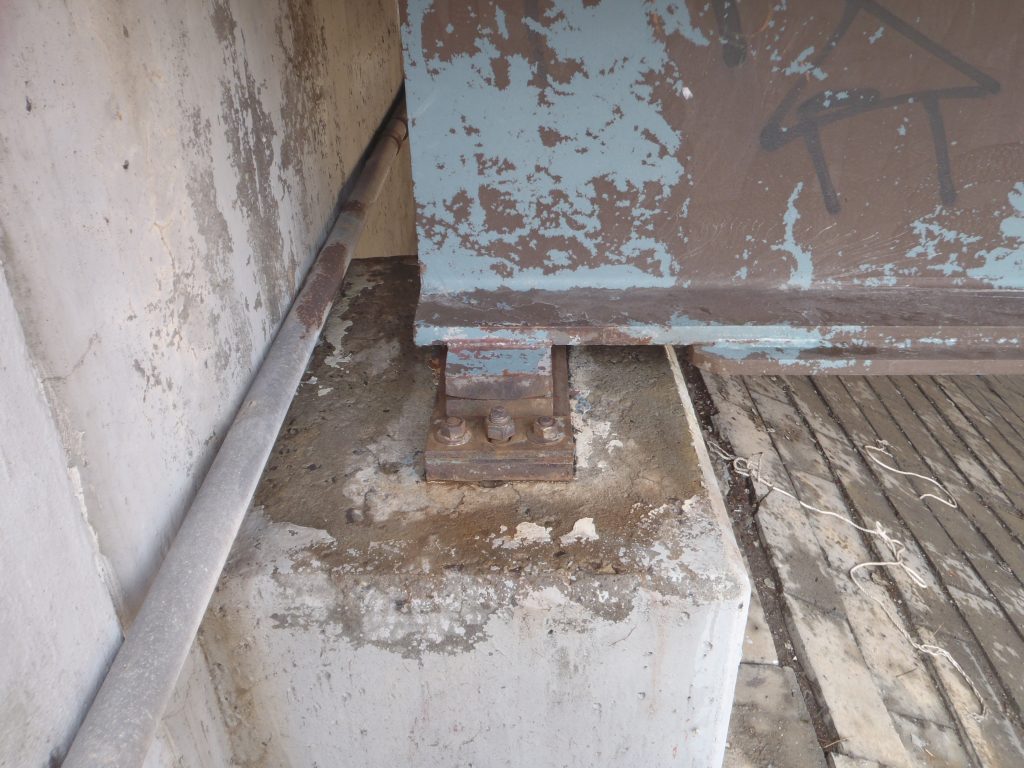
Application Temperature, Dew Point, Relative Humidity:
□ Application Temperature, Dew Point, Relative Humidity:
Minimum + 2°C application temperature, 2°C temperature-dewpoint spread, 99% relative humidity.
□ Flash rust is light to medium.
□ Substrate paint will pass 100 lbs/ inch2 pull-test and the dull putty knife test.
You’re now ready to apply HRCSA!
Step 1: Apply TR2200HS Penetrant / Sealer into opened joints and connections ONLY.
Applying Penetrant
Use auxiliary tips to pressure-apply TR2200HS deep inside crevices. Apply a generous application. Excess materials to be brushed out onto the steel surface before coating.
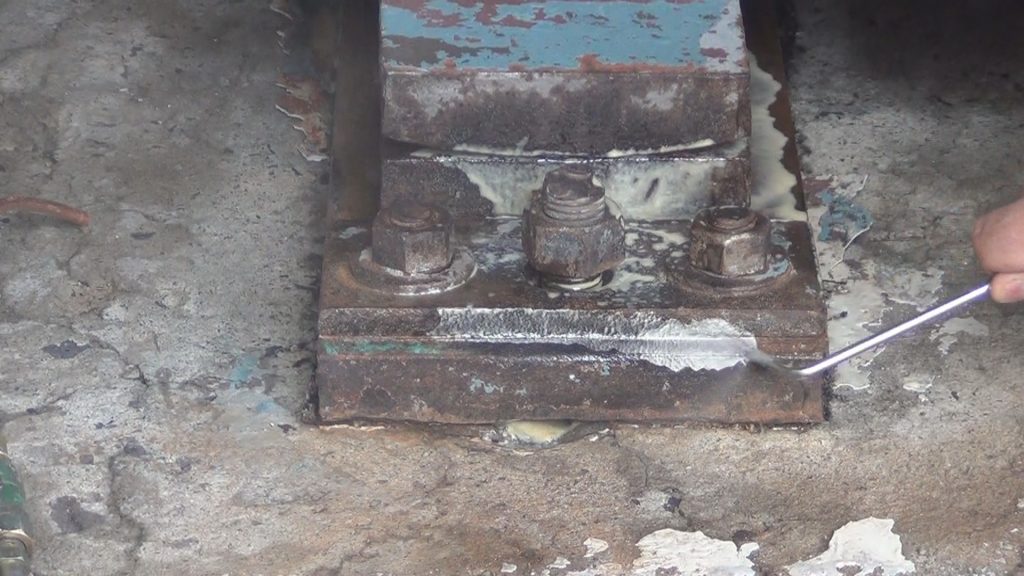
HRCSA Penetrant/Sealer is applied only inside crevices and NOT to be used as a primer on flat surfaces.
Preparing for TR2100 Primer/topcoat application.
□ Flush paint lines / clean spray guns, etc. with TRT01 thinner before loading paint lines with TR2100 Primer / Topcoat.
Note: Because TR2100 is a single-component system, you did not need to flush paint lines between shifts. Flush only in the beginning and at the end of the project. At the end of work-shifts, disconnect paint-gun, cap the paint line until next shift use. Place paint gun in TRT01 overnight before reconnecting. Stick airless pump Typical 30:1 pressure ratio [10:1 and 80:1 also seen applied in the field.] directly into the barrel (single component / no mixing).
□ Clean, airless spray guns equipped with Airless Spray Tip: 17-23 empowers you to optimize production rates. Keep wet-film thickness gauges at the ready to measure the progress of the one-coat wet-on-wet material application. Note: TR100 is thixotropic so although sagging is not an issue, exceeding maximum allowed thickness may be.
Applying HRCSA TR2100 Primer/ topcoat onto the steel substrate.
Step 2: Caulk-coat, Stripe-coat, Prime-coat, and top-coat in one sitting Wet-on-Wet!
□ TR2100 Caulk coating
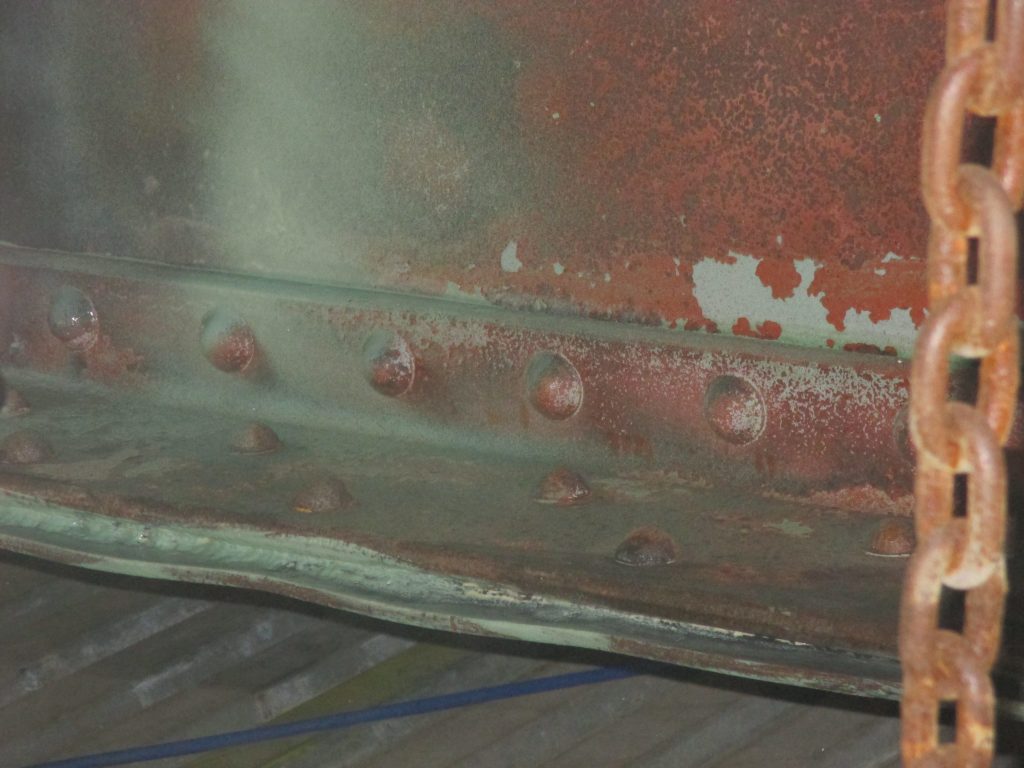
30-36 mils WFT of TR2100 CAULK COAT is airless spray applied into TR2200HS penetrated pack-rusted connection. The two chemistries will meld once pressure-applied overtop one the other.
□ Stripe coating, Overcoating (Wet-on-Wet. Complete section by section. Do not allow to dry between shifts.)
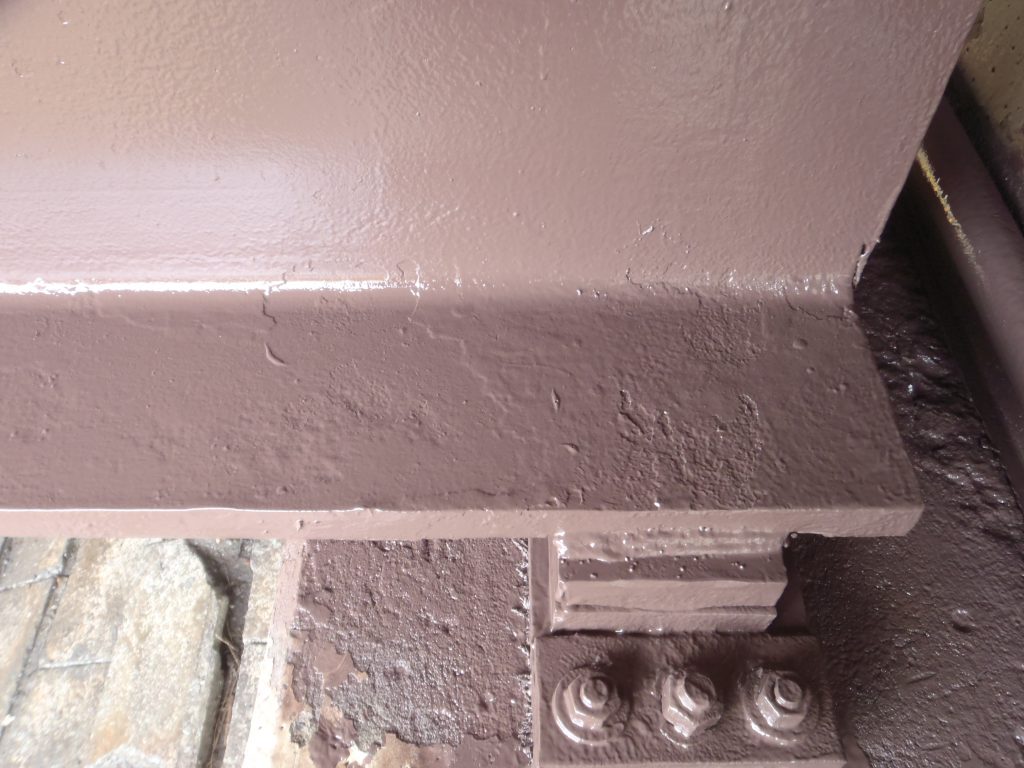
7-9 MLS wft STRIPE-COAT to be applied overtop rivet heads, connections, sharp edges and bare steel areas.
An additional 7-9 MLS wft thickness is airless sprayed overtop the entire surface wet-on-wet to complete the section.
Live footage of the HRCSA single coat application.
Total Measurable HRCSA Application End Result:
Salts measurements inside specification. [Chlorides <3 ppm or μg/m2, etc.]
Caulk-coated areas will measure 29-36mls || 525-675 microns WFT of TR2100.
Stripe-coated regions will measure 14-18mls || 350-450 microns WFT of TR2100.
Added plates will measure 14-18mls || 350-450 microns WFT of TR2100.
Overcoated pre-existing tightly adhered paints will measure 7-9mls || 175-225 microns WFT of TR2100.
